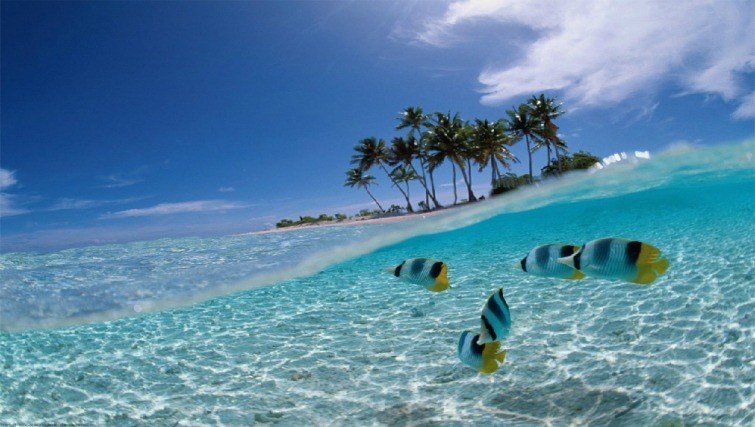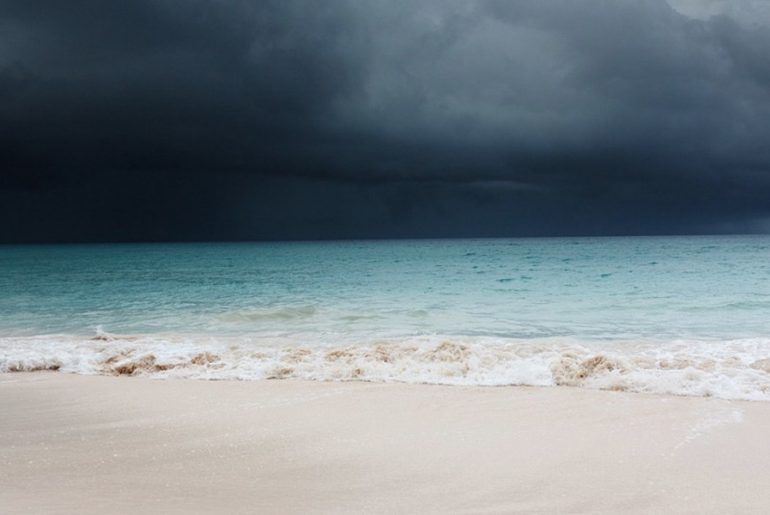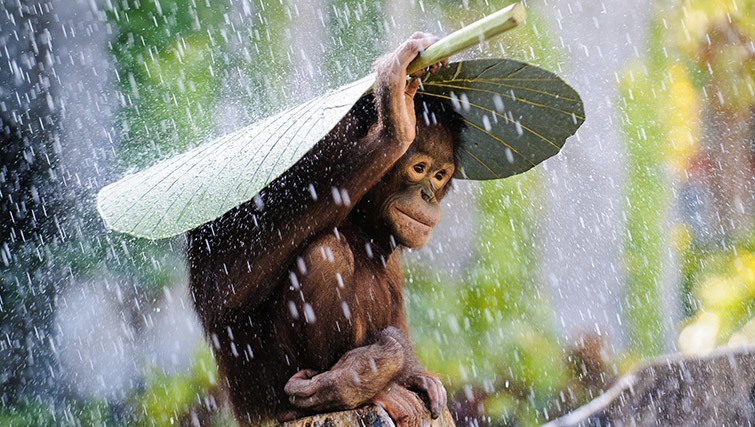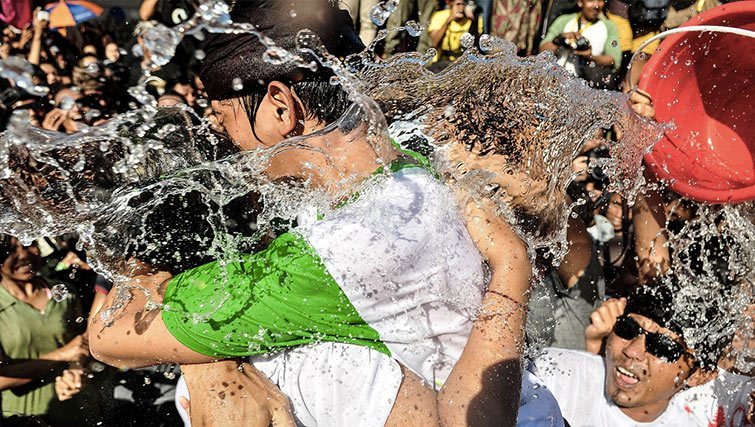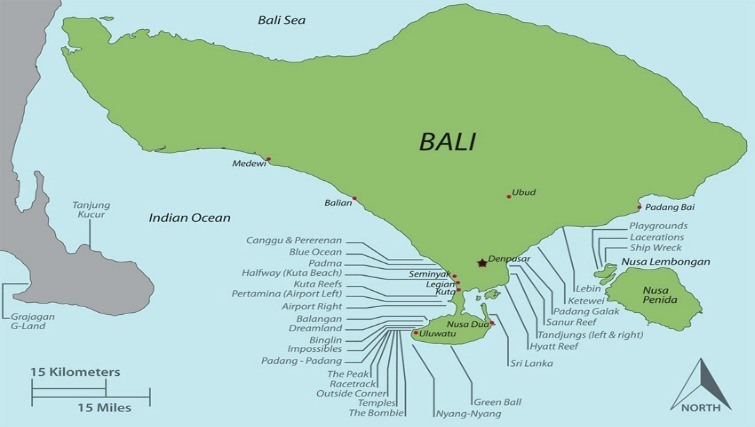Located just 890km south of the equator, Bali’s tropical climate and moderate weather conditions make for a killer holiday at any time of the year. With two distinct tropical seasons, the wet season and a much cooler dry season, the best time for you to travel to Bali will ultimately come down to what you want out of your holiday and the kind of activities you have on the agenda.
Whether you fancy a dreamy sojourn filled with soothing massages and spa treatments in the mountains of Bedugul, or a tick-off-your-bucket-list style getaway complete with volcano trekking and scuba diving, our month by month guide to Bali’s weather has, quite literally, got you covered.
Wet season
The wet season lasts from end of December/ beginning of January until April and, apart from December and January which are vibrant months for Bali’s calendar, buzzing to the brink with holiday-makers, it is a more subdued time for the island. The atmosphere is relaxed and lazy, the humidity is at its highest point and there are fluctuations between moody rainstorms that soak the island to warm steamy days with cloudless skies.
Dry season
Bali’s dry season occurs between the months of May and September and is the busiest time of year for tourism on the island. July, August and September are particularly busy months as the humidity is low and the rainfall minimal, making for a comfortable albeit more expensive time to holiday in Bali.
Despite each season having its own set of characteristics, the temperature is a moderately stable 27ºC to 30ºC throughout the year.
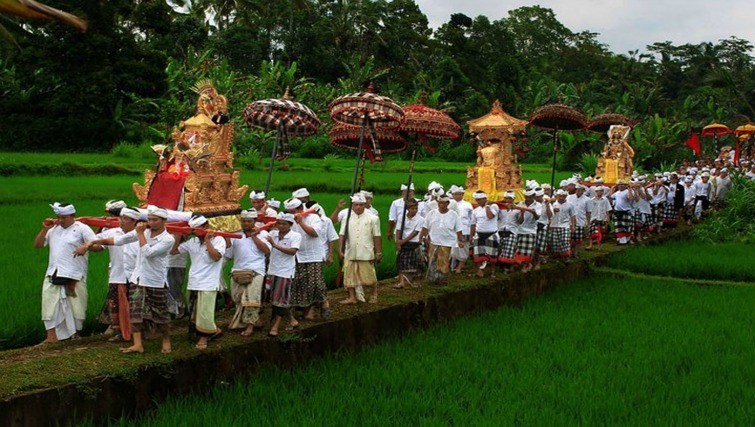
Bali’s wet season- October to April
Bali’s wet season begins at the end of October and lasts until the following April. It’s a humid, sticky, shirt-stuck-to-your-chest time of year, and for this reason many people avoid visiting during this time. But there are many overlooked advantages that the tropical rain brings with it including world-class swells and a quieter, more tranquil Bali.
Weather in Bali in October
Bali’s temperature throughout the month of October usually sits somewhere between 25ºC and 33ºC . The dry hot winds that blow in from Australia make October one of the hottest months of Bali’s year. Rain is minimal but humidity levels do rise as the month progresses. October’s hot days and generally blue skies make it an ideal time to explore the island.
Weather in Bali in November
November is normally characterised by on and off rain. That being said, there have been some years when Bali hasn’t seen its first real rain storm until early January. It’s best to pack wet weather gear and keep an umbrella handy. If you’re booked to visit Bali in November, do not fret. The rain is not constant and, unless you plan on carrying out activities that require very clear visual conditions, things continue as normal.
Humidity levels reach about 80% throughout November so get ready for the heat and be sure to pile on that sunscreen lotion. Most good hotels have air conditioners. If you’re staying in basic accommodation then you will be extra appreciative when the rain stops and is replaced with a refreshingly cool breeze.
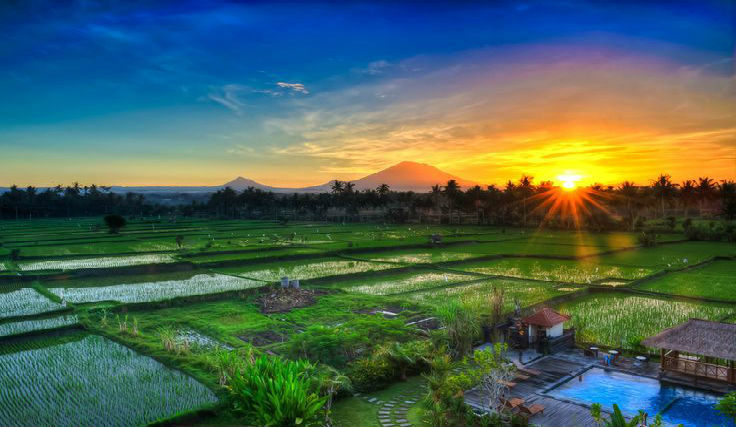
Weather in Bali in December
If the November prior didn’t experience much rainfall then December’s weather in Bali will really take things up a notch as the monsoon season sets in. The rain is frequent and comes in short, heavy, often excessive bursts that can last anywhere between a few minutes to a few days. Due to a general lack of drainage in Bali, minor flooding can sometimes occur in the streets. The days will be mostly wet and the sky cloudy and yet Bali will remain extremely hot with humidity levels hitting as high as 85%.
Bali’s beaches, especially in the south, tend to get a little polluted during this time of year as strong currents wash trash onto the shore. Not that Bali’s tribe of avid surfers is fazed. Instead, their attention is on the ripper offshore breaks that form in the west as the monsoon winds get stronger. An added benefit for surfers during the wet season is the warm water. Wetsuits are certainly not needed. Most surfers can get away with not wearing wetsuits for most of the year but water temperatures do tend to dip slightly during the dry season, especially from July through till August, so you might want to pack one then.
Despite the rain, December and January are two of the busiest months of the year for Bali’s tourism with thousands of people flocking to the island to celebrate Christmas and the New Year. There are loud and colourful celebrations in the streets and the island buzzes with energy and excitement, a stark contrast to the much quieter first half of the season. As a result, hotel prices tend to skyrocket so be sure to book accommodation in advance.
On Christmas Day, many restaurants offer scrumptious buffet lunches of roasts and other Western comforts that will make many feel right at home. New Year’s Eve sees many holiday-makers head to the famous Kuta Beach to watch the fireworks and celebrate together. If it rains, which it quite often does, revellers retreat to Beach Walk Mall where they have convenient views of the beachfront action.
Weather in Bali in January
With an average rainfall of 300 millilitres, January is Bali’s wettest month. It’s also an incredibly hot month so the rain is not such a bad thing. In fact, the heavy rain often comes as welcomed relief after a day of Bali’s scorching heat and humidity.
The rain tends to be much heavier in the mountain and highland regions compared to the eastern and southern coastal areas, so keep this in mind when booking accommodation and planning your holiday. It’s also important to note that the weather in January is quite regional. Denpasar’s weather report of sunshine and bright skies doesn’t mean that Bedugul in the north will be experiencing the same conditions, so be sure to do your research.
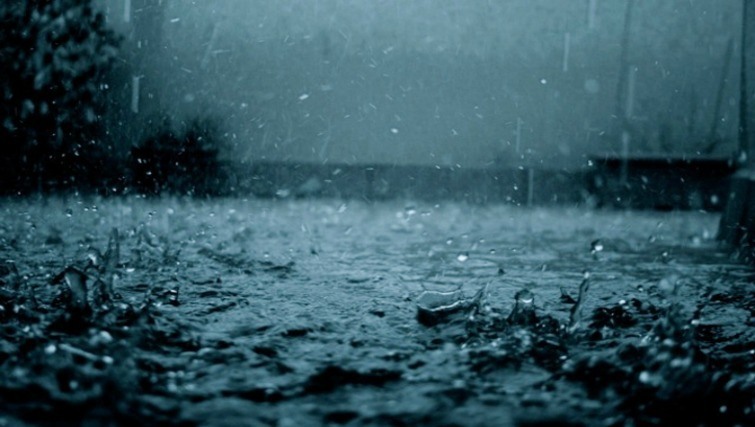
Weather in Bali in February
February in Bali is usually a little drier than January but you should still be prepared for frequent rain. With a monthly average rainfall of 280 millilitres, it is still very much the wet season.
The temperature in February does not stretch too far from Bali’s average levels. With highs of around 32ºC, it is both hot and humid. Be sure to always keep a bottle of water on you and remember that sunscreen can be nearly double the price if you purchase it in Bali, so we advise stocking up before you leave.
Indonesian locals who understand Bali’s seasons well tend to visit the beaches and do most of their running around in the late afternoon when the intense heat and humidity has settled. Sunset happens just after 6pm, and it is a lovely time to relax or go for a walk.
Hot Tips
- If you plan on undertaking outdoor activities try to schedule them for later in the day when the sun is not at its hottest. Remember that humidity levels will be sitting around the 75% level so you may feel quite sticky and uncomfortable moving around outside.
- February is considered the ‘off peak’ season so flights and hotels can often be booked at a cheaper rate.
Weather in Bali in March
Rain becomes less frequent throughout March and April as the wet season transitions into Bali’s much-awaited dry season. Despite the changing seasons, the weather in March in Bali remains cloudy, often with overcast skies and showers. There are days when it all dries up and the clouds are replaced by bright sunshine.
Sitting around 27ºC with an average minimum of 23ºC, March’s average temperatures are only slightly lower than the previous months. At night the temperature drops to about 25ºC but if you are staying in the mountains it can drop to as low as 15ºC.
March hosts one of the biggest festivals of Bali’s year, Nyepi. Meaning ‘silent’ in Bahasa Indonesian, Nyepi is the religious Hindu day of celebration for the Balinese New Year. Locals turn off electricity, refrain from all forms of entertainment and stay indoors for 24 hours to allow themselves the opportunity to self-reflect, and tourists are expected to follow suit. Local security guards called pecaleng patrol and watch the streets to make sure no one goes outside their homes or breaks the rules. This tradition is undertaken because the Balinese people believe that if the island is silent and everyone is indoors, evil spirits will mistakenly think the island is empty and move on.
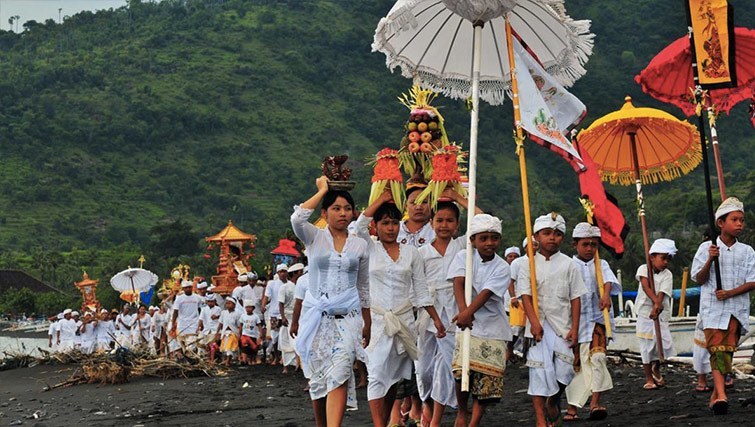
The following day is marked by a ‘mass kissing festival’,Ngembak Gen. Known to the locals as “Omed-omedan”, it is a unique Balinese tradition held amongst the youth which honours the healing power of a kiss.
Hot tip: All shops and restaurants are closed on Nyepi so be prepared by pre-purchasing food and essentials. Head to Bintang supermarket in Seminyak to get all your fruits, beverages and international groceries.
Weather in Bali in April
With greatly reduced humidity levels (around 65%), April heralds the end of Bali’s wet season. Monthly rainfall is reduced to 70 millilitres on average, the days are clearer and that classic Bali heat is on the rise with some days reaching 33ºC. Surprisingly, it’s not a very busy time for tourism making it all the better for those who do visit in April. There are fewer crowds, less noise and more bargains to be had on accommodation.
Wet season Tips: what to be aware of?
- Dengue Fever: This mosquito-borne viral infection should be avoided at all costs. Some people take tablets or get immunised against the disease prior to their trip, while others just use insect repellents. We recommend purchasing a local mosquito repellents as it is believed that insects have become resistant to the Western versions. Repellents can be easily found in most mini marts and supermarkets.
- Slippery roads: With the wet season comes slippery roads and trekking conditions, obscured views and poor visibility on the streets. It is advisable to practice extra caution when driving (especially on a scooter) and while doing recreational activities.
- Safety Pack: Pack some pharmaceutical safety essentials like probiotics and tablets for diarrhea so that you’re prepared in case you get the notorious ‘Bali Belly’.
Save Money
As the wet season is also Bali’s low season for tourism, hotel prices, tours and airfares will be super cheap and you can get some great discounts if you plan ahead. If you don’t mind a bit of rain and like the idea of a less crowded, more tranquil Bali, then the wet season in Bali is perfect for you!
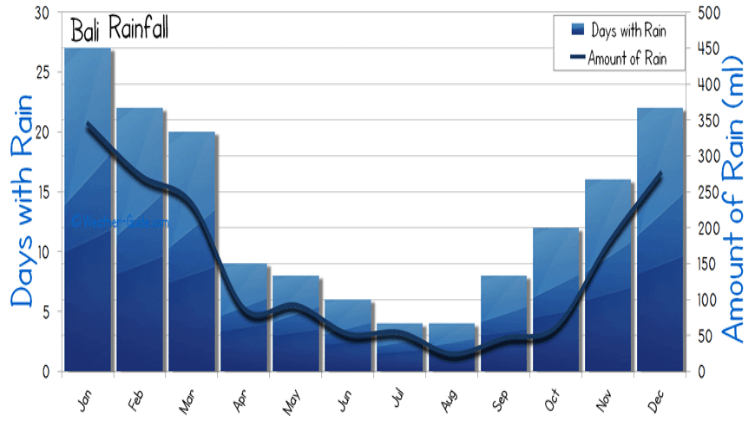
What to wear during the wet season?
You should expect the unexpected during Bali’s wet season. Even though the weather report might forecast clear skies and sunshine, the conditions can change quickly and often, heavy rain appears from nowhere. Therefore we suggest not wearing your best attire out and about but rather investing in some rain-friendly threads.
Disposable rain jackets and umbrellas can be purchased very cheaply in Bali so save the space in your suitcase and just head to the local market when you arrive to stock up. If you happen to be sitting down in a restaurant or at a warung in the street when the rain starts, you will notice that opportunistic locals selling umbrellas and rain jackets will arrive just in the nick of time. These will be a little pricier than those sold at the markets but when you need an umbrella, you need an umbrella, and this service will seem like a gift from the rain gods themselves.
Pack light clothes in breathable fabrics. We suggest bringing clothes made out of cotton, silk or linen as they are cool and suitable for Bali’s humid conditions. On top of this, they also dry quickly which is always helpful during the wet season. Avoid wearing tight clothing that will make you chafe and sweat and always carry a hat and sunscreen with you to protect you from the merciless sun.
T-shirts and flip flops (”thongs” for Australians) are fine to wear on the streets and around most tourist areas but if you intend on visiting a sacred temple, attending a local religious ceremony or visiting a Balinese family, it is important you dress modestly and follow local customs. If you’re taking a day trip to a temple, sarongs and scarfs can usually be purchased or rented for a small charge but you should find out beforehand as every temple is different. It is important to cover up your body particularly your shoulders and chest area, and you will always be required to remove your shoes.
If a woman is pregnant or has given birth in the six weeks prior, she should not enter the temple as it is considered impure. This a regulation held throughout Indonesia and is not unique to Balinese temples alone but to all Islamic mosques; an important note to remember should you be heading to Lombok or any other Indonesian island that does not practice Hinduism as the main religion.
Dry season- May to September
The dry season, Bali’s version of summer, occurs between the months of May and September. It is the favoured half of the year for both locals and tourists alike boasting bright sunny days, lower humidity levels compared to the wet season and, of course, very little rain.
The dry season is an extremely popular time for people to explore Bali, particularly throughout July and August as this time coincides with the Australian winter and the school holiday season.
It’s the perfect time to explore the island by day and enjoy candlelight dinners on the beach by night.
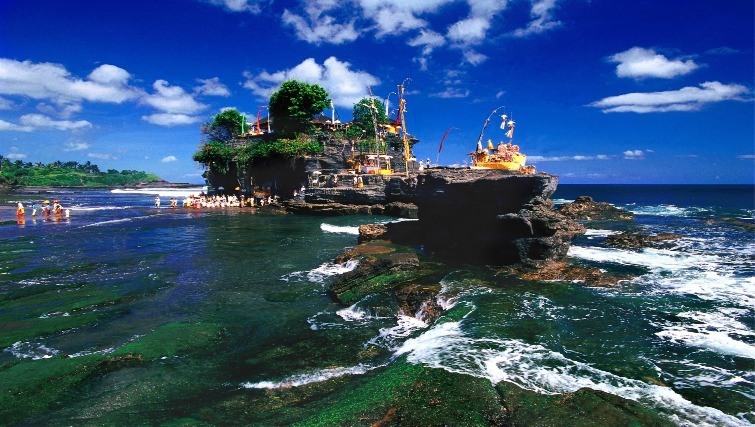
Weather in Bali in May
May tends to be one of Bali’s cooler months, but for those that are visiting from anywhere that experiences a real winter, it will seem comfortably warm. The average temperature is 28ºC and while this may not seem drastically different from the rest of the year, you will find that locals and long-term expats talk of turning down the AC at night and having to put jackets on. Cut them some slack though, compared to the high humidity and intense heat of the wet season, May feels like a winter wonderland.
Weather in Bali in June
Humidity levels are at their lowest from June until October and so Bali experiences some of its lowest temperatures.
The month of June is host to the famous Bali Arts Festival. The month long celebration of Indonesian culture includes performances held at the Bali Art Centre in Denpasar as well as the Bali Kite festival and sees many people head to the island to experience its unique culture and festivities.
Things pick up in June as thousands of tourists scurry to the island for the start of the busiest holiday season of the year, the July-August period.
Weather in Bali in July
The weather in July in Bali continues to be relatively cool and comfortable, making it a very desirable time to jump on a plane and explore the island.
Skies are almost always blue and it is the perfect time to try your hand at water sports or to have an outdoor dinner by the beach.
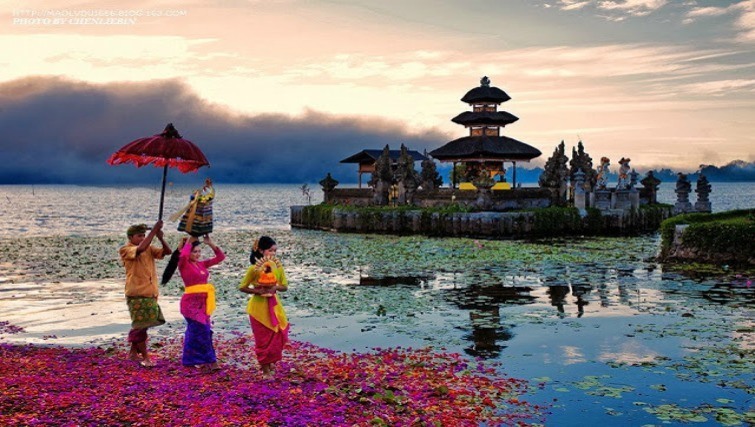
Weather in Bali in August
August is Bali’s driest month and so rain is not something you will have to worry about. With a monthly average rainfall of 40 millilitres that occurs over roughly three days, August is the perfect month to maximise your outdoor time in Bali.
It will be hot during the day so don’t forget to lather on the sunscreen. Evenings in August and all throughout the dry season enjoy beautiful breezes, making it a lovely time to sit outside and enjoy a meal.
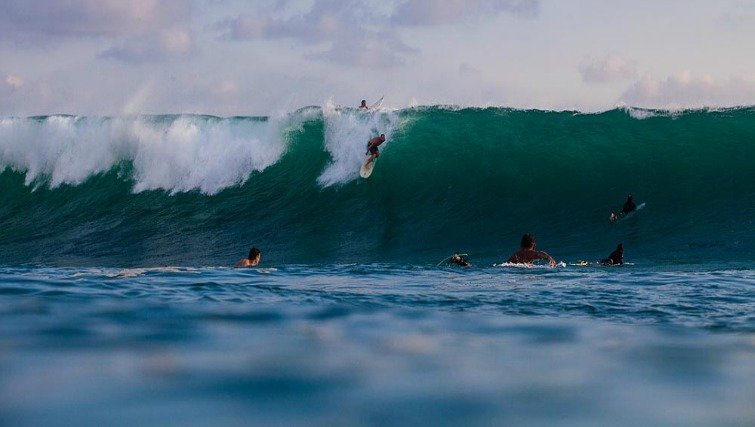
Weather in Bali in September
The weather in September in Bali is characterised by sunny picturesque days, great for sunbathing or doing a spot of holiday shopping and on average, sees highs of between 30ºC to 32ºC. With nine hours of sunshine per day, it is many people’s preferred time to visit Bali. If it does rain, it is usually very little (about 90 millilitres on average for the entire month) and occurs in the late afternoon or evening.
Tip
As September follows the peak July-August period, prices are generally reduced.
Dry Season: what to wear
General Clothing
The dry season can get quite chilly during the evenings so it is important to pack at least one jacket and a good pair of socks. You won’t regret it, especially if you’re staying on higher ground or in the central mountain areas of Bali.
Even though humidity levels are lower during Bali’s dry season, the days are long and the sunrays are strong and unforgiving, making it is very easy to get burnt. If you’re spending lots of time outdoors, be sure to bring a hat and apply generous amounts of sunscreen.
Supplies for Surfing
The minimal rain and low humidity of the dry season make it a very popular time for outdoor activities. Many tourists try parasailing, scuba diving or jet skiing, but the most popular activity of all is surfing. It is smart to pack a wetsuit, especially if you intend to surf between the months of June and October when the water temperature is at its coolest. Coral reef booties are also essential as many of Bali’s beaches break on sharp live coral reefs that can cut your bare feet.
Tip
As a tourist it is important to dress as respectively as possible throughout the year, no matter what season you’re visiting in. Despite the island and its people feeling very familiar and westernised, Balinese people maintain a very honourable grip on their culture and are often far more conservative than the party atmosphere of Kuta might lead you to believe. Public displays of affection are usually frowned upon and while it might be ok on the streets of Legian, wearing a bikini to the mall is not appreciated by the locals.
As a general rule of thumb, the more well groomed you are the better you will be treated by the Balinese people. The island’s culture has largely been shaped by the Hindu religion. To act in a way that is insensitive to these beliefs is shameful and reflects badly upon tourists as a whole. So remember to always be mindful of how you are presenting yourself and how you might be seen from the eyes of a local.
Surfing in Bali by season
Internationally acclaimed for its ferocious waves and stunning landscape, Bali is a surfer’s paradise. Its beautiful southern coastline captures enormous ocean swells brought in from the Antarctic that generate spectacular waves and swell all year round. While there is always good surf to be had, Bali’s two seasons determine where these waves are found. The general rule is that the east coast is the best place to surf during the wet season and the west coast of Bali is where it’s at during the dry.
Not surprisingly, the most popular time to surf in Bali is throughout the dry season, particularly from June through till September. As this coincides with the peak tourist season, beaches can become very crowded. To avoid crowds, seek out quieter beaches off the beaten track. Of course, these will be harder to get to but the reward will be worth it.
While the energetic atmosphere of the dry season can help build momentum and excitement out in the surf, those looking for something a little more chilled but still adventurous should surf Bali during the wet season.
Surfing Bali in the Dry Season
During Bali’s dry season the best waves can be found on the island’s west coast. From Kuta all the way to Uluwatu, the western coastline provides the biggest and best swells thanks to the south-east trade winds that blow in during this time of year.
The best surf beaches on the west coast include:
- Bingin: Bingin beach is an exposed reef break which means there are no rocks. It has massive left-hander swells that tend to be quite short and so are best negotiated by advanced surfers. While Bingin is a very beautiful beach it does get rather crowded, made even worse by the fact there is only one area to take off.
- Padang Padang: The waves here are most suited to advanced surfers due to their super fast nature and left-hander swells that will challenge even the best. The fact that the waves break over a sharp coral reef only adds to the difficulty 0f this wave.
- Tukad Balian: This is a beautiful beach break with surf that’s suited to intermediate level surfing. Balian is not a crowded beach,the waves are consistent left-handers and the swell is long and fat. Because of its location at the mouth of the Balian river, the waves tend to get broken up as they rush in which creates a strong rip. Some surfers like to get in behind the waves at this point, but be sure exercise caution as the rip is very strong and has the potential to pull surfers long distances. Compared to many of the other beaches on Bali’s west coast, Balian has some of the biggest waves with the added bonus of stunning panoramic views. On top of this, the water is usually warm, clean and the sand is black. Tukad Balian is located in the Tabanan Regency in the village of Lalang Linggah, about an hour and a half drive from Kuta.
- Impossible: This beach is an extremely popular surfing spot with gorgeous 180º views of the Indian Ocean and solid barrel waves best suited to experienced surfers. Located in the beach resort of Pecatu, it will take about 30 minutes to get here from Legian and is situated in close proximity to many tourist attractions including Uluwatu temple.
- Uluwatu: The huge number of surfers that are at Uluwatu at any given time speaks volumes about the quality of the waves here. The swells are fast and powerful and the currents are strong so be sure to exercise caution, especially when entering and exiting the Uluwatu cave that leads to the main breaks. Because of its challenging nature, Uluwatu’s waves are best suited to advanced surfers. When you’ve finished your surf, head on down to Single Fin restaurant and bar propped up on the cliff and overlooking the stunning coastline.
- Kuta beach and Seminyak: The smaller, mellower beach breaks of Kuta and Seminyak are suited to all levels of surfers.
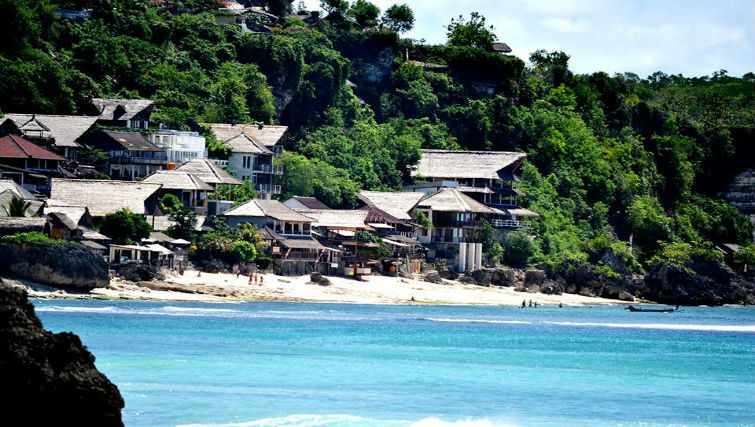
Surfing Bali in the Wet season
If you’re keen to avoid crowds out in the surf and enjoy a generally more relaxed vibe, head to Bali during its wet season.
The wind changes that occur during this time of year result in west coast left-hander swells that are far mellower and smaller than those from the dry season. Instead, the best waves can be found on Bali’s east coast where, thanks to the strong monsoon weather conditions, the winds are wild and the right-hander waves are near perfect.
The best surf beaches on Bali’s east coast include:
- Nusa Dua:This famous stretch of beach offers long, heavy right-hander waves that can get up to 10 feet high. If such heights are intimidating, head further down the coast for some smaller waves.
- Keramas: Located to the east of Denpasar city in Sanur, the waves at Keramas beach have a lot of power and are suited to high performance surfers. Be sure to watch out for the sharp coral reefs and sea urchins.
Here are some less familiar beach breaks on Bali’s east coast that are especially great to surf during the wet season:
- Mushroom Rock
- Sir Lanka
- Turtle Island
- Tanjung Sari
- Hyatt Reef
- Sanur Reef
- Ketewel
Tip
Bali’s beaches are best surfed early in the morning to avoid onshore winds. This goes for both the wet and dry seasons.
Festivals in Bali by season
From local religious ceremonies to international festivals that draw huge crowds, Bali’s streets are always buzzing with some kind of celebration.
The dates of local Hindu ceremonies are based on three different calendars (Western, Saka and Wuku) and so it is sometimes hard to know exactly what date holidays will occur. To help you out, we’ve compiled a month-by-month guide to Bali’s major events and festivals during both the wet and dry seasons.
FESTIVALS IN BALI’S WET SEASON
March to April:
- The Melasti Ritual is the first of a series of rituals performed before the Balinese day of silence (Nyepi). Known locally as OghoOgho, the Hindu purification ceremony involves cleaning and purifying temples before the following day’s proceedings.
- Hari Nyepi translates to “the silence day” in Bahasa Indonesian and marks the beginning of the Balinese New Year. The annual ritual is dedicated to self-reflection and involves locals and foreigners practicing silence for 24 hours. During this time, nobody is allowed to leave their house or use technology and all shops are closed. New Year celebrations begin in the streets the following day including the famous kissing festival, ‘Omed Omedan’.
- Kartini day is a time for local Indonesian women to pay respect and homage to Kartini, the Balinese woman who was the driving force behind the Indonesian women’s rights movement.
- Bali Spirit Festival is a celebration of yoga, dance and music. Held over five days in the mountains of Ubud, the festival attracts large international and local audiences.
June to July:
- Bali Arts Festival is the largest cultural event to take place on the island. Known to locals as ‘Pesta Kesenian Bali’, the annual festival takes place in Denpasar and is a celebration of Indonesian culture and the arts.
- Bali’s Kite Festivalis a beautiful Hindu event that honours the highly revered craft of kite making and flying. Held annually in July at Padang Galak, Sanur Beach, this international festival is a spectacular sight and not to be missed if you’re visiting Bali at this time.
August to September:
- Indonesia’s Independence Day happens every year on the 17th of August and marks the day that Indonesia officially gained independence from the Dutch in 1949. The day is celebrated with pride throughout the nation but especially on the streets of Bali.
- Nusa Dua Festival is a week long tourism event held at the Nusa Dua Resort and showcasing the best of Indonesian culture.
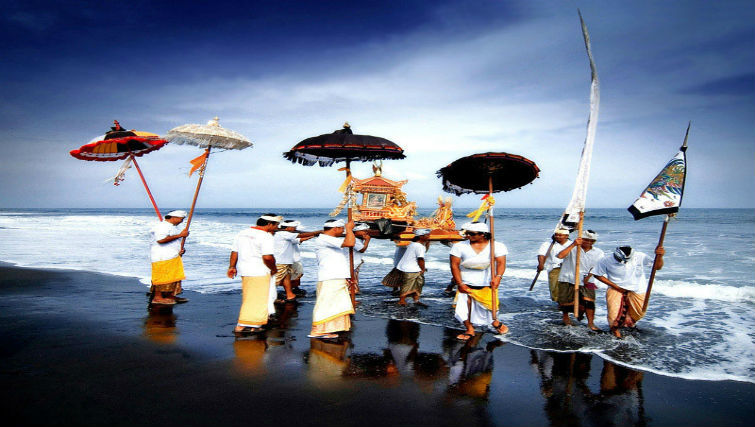
FESTIVALS IN BALI’S DRY SEASON
October to November
- Ubud Writers & Readers Festival is Bali’s annual literary festival celebrating global issues, big ideas and extraordinary stories. The event attracts talented established and emerging voices from all over the world and is a must-see.
- Bali Film Festival is a week long event held annually in October and showcasing a fantastic range of international independent films. If you’re on the island at this time of year, we highly recommend checking the Bali Film festival
December
- Hari Raya Galungan (17th) Galungan is the first event of a very significant holiday period for the Balinese calendar. In the Hindu religion Galungan is believed to be the time when the spirits of deceased ancestors come back to earth and in return the Balinese say prayers and provide offerings and hospitality. You will notice bamboo poles in the streets suspending offerings that are made for the visitors.
- Hari Raya Kuningan takes place exactly ten days following the Galungan celebration and is believed to be the time when the spirits finally leave earth.
Weather in Bali in Overview
Whatever the season, Bali always provides an enchanting holiday. The sun is mostly always out and the locals are almost always smiling, and despite what the weather might have up its sleeve, there is always a way to enjoy Bali.
Take the time to plan what you want out of your holiday, evaluate the pros and cons of each season and make Bali’s weather work for you.
